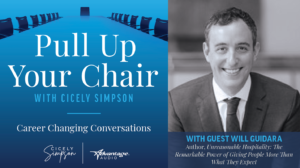President Donald Trump
- Today, Administration reached a historic agreement with Pfizer to produce and deliver 100 million doses of their vaccine immediately following its approval. Hopefully, the approval process will go very quickly. We think we have a winner there. We also think we have other companies right behind that are doing very well on the vaccines — long ahead of schedule.
- As part of Operation Warp Speed, this agreement will also ensure that we receive an additional 500 million doses shortly thereafter. This is another crucial step in our effort to develop, manufacture, and distribute a vaccine in record-breaking time. I want to thank the FDA. I want to thank everybody involved. It’s been an incredible process.
- As we discussed yesterday, the China virus poses the greatest threat to our senior citizens, as we all know. The median age for those who die from the virus is 78 years old, and nearly half of the deaths have occurred among those living in nursing homes or long-term care facilities. That’s really something.
- In other words, approximately half of the fatalities have occurred among less than 1 percent of the U.S. population. Think of that: less than 1 percent, half of the fatalities. We know what to look for.
- From the beginning, we have made it our top priority to shelter our seniors. In early March, we announced guidelines suspending all medically unnecessary visits to nursing homes and prioritized resources for those facilities. FEMA has sent shipments to many different locations of protective equipment, and it’s going directly to 15,400 Medicaid- and Medicare-certified nursing homes throughout the country.
- We’re requiring increased testing of the nursing home personnel in states where you had the worst outbreaks. All personnel will be tested at the highest level. We’re distributing 15,000 rapid, point-of-care diagnostic devices to support this effort. These are the tests where it takes five minutes to fifteen minutes. They’re very accurate. They’re very good. We’re sending them all over the country. Over 600 devices will be also shipped this week to additional facilities.
- HHS will be distributing an additional $5 billion from the Provider Relief Fund to all nursing homes. Nursing homes in higher-risk areas will be receiving more funding. This money can be used to address critical needs, including the hiring of additional staff, increasing testing, and providing technology support so residents can connect their families and they can connect to their families. They are having a tremendous time. They want to be with their loved ones. They can’t do it, so what we’re doing is we’re working it so that we can connect — have them connect with their families if they’re not able to visit.
- We’ve identified especially high-risk nursing homes and sharing that information with the Governors, so that the Governors and their staffs can take appropriate action. Because of the testing programs and other means, we’re able to find certain areas that are very high-risk. The Governors can then take action.
- Additionally, CMS, CDC, and the U.S. Public Health Service are providing enhanced technical assistance and support, including visits to the highest-risk nursing homes. That’s their priority right now: nursing homes, but the highest-risk nursing homes. CMS and CDC are implementing a national training program focused on infection control for those nursing homes that need it most. We have them surveyed, and we have them mostly pinpointed.
- Over the past few months, we’ve created a surveillance system to detect outbreaks. Currently, 99 percent of all nursing homes are reporting directly to it, so we have great data. When a nursing home has three or more cases, we alert the state and make sure that it responds very quickly. We check on it and make sure they respond very quickly.
- I want to send a message of support and hope to every senior citizen who has been dealing with the struggle of isolation in what should be the golden years of your life. We will get to the other end of that tunnel very quickly, we hope. The light is starting to shine. We will get there very quickly. We send our love; we send a message of love — very important. We’re with you all the way.
- We continue to vigorously combat the rise of cases in the South and Southwest and the West. We’re closely monitoring and aggressively acting to control the infection in Texas, Arizona, California, Florida. Arizona is starting to come down. Done a very good job. They’re all doing a good job. They’re very talented people.
- There are likely a number of causes for the spike in infections. Cases started to rise among young Americans shortly after demonstrations which presumably triggered a broader relaxation of mitigation efforts nationwide. A substantial increase in travel also was a cause. Increased gathering on holidays, such as Memorial Day, as well as young people closely congregating at bars and probably other places — maybe beaches — four or five different listed places; we have 12 that are listed on the guide — likely also contributed.
- We’re also sharing a 2,000-mile border with Mexico, as we know very well, and cases are surging in Mexico, unfortunately. I was with the President, and it’s a big problem for Mexico. Cases are surging very sharply and all across the rest of the Western Hemisphere. Two hundred and fifty-seven miles of newly constructed wall along the southern border has had a great, positive impact on people coming in. We have record-low numbers of people coming in illegally; that’s helped greatly. It was really meant for a different purpose, but it worked out very well for what we’re doing right now and for the pandemic.
- Nationwide, beyond the outbreak in several states, cases remain low and very stable. Nineteen states have positive test rates of less than 5 percent. Eight states have positive test rates of less than 2 percent. Our nationwide positive test rate is beginning to decline and is currently at 8.8 percent, compared to over 16 percent at its peak in April. It’s coming down. It’s coming down fairly rapidly.
- Today, we surpassed 50 million tests. That’s far more than any country in the world.
- We’re working with every state to ensure the supply of remdesivir for early case intervention and steroid treatment and various other treatments for those that are seriously ill. We’re working very closely with hospitals, doctors, nursing homes — everybody. The remdesivir has proven to be terrific. Our case fatality rate continues to decline, and we want to push this rate even lower.
- The therapeutic research continues daily on new and very promising treatments, including antibody treatments and the use of blood thinners and steroids. A lot of different things are happening, and a lot of things are coming out that we wouldn’t have known a number of months ago. We’re doing tremendously well on therapeutic research and tremendously well on the vaccines.
- Frankly, therapeutically — or maybe a word even beyond that word is “cure” — would be the best of all, and we’ll see what happens. That would be great if we could go into the hospital, and just cure people. We think, in a very short period of time, we’ll be able to do that.
- Our strategy is to shelter the highest-risk Americans, while allowing younger and healthier citizens to return to work or school while being careful and very vigilant.
- Wear a mask, socially distance, and repeatedly wash your hands. Practice very, very good sanitary means. You have to do this. You have to look at it differently. Wash your hands often. I’m finding more and more people are saying, “Wash your hands.” So, wash your hands. We want young Americans to avoid packed bars and other crowded indoor gatherings.
- We’re all in this together. As Americans, we’re going to get this complete. We’re going to do it properly. We’ve been doing it properly. Sections of the country come up that we didn’t anticipate — for instance, Florida, Texas, etc. — we’re working with very talented people, very brilliant people, and it’s all going to work out, and it is working out.
Topics covered in the answer and question portion of the briefing can be found here: July 22 Briefing


